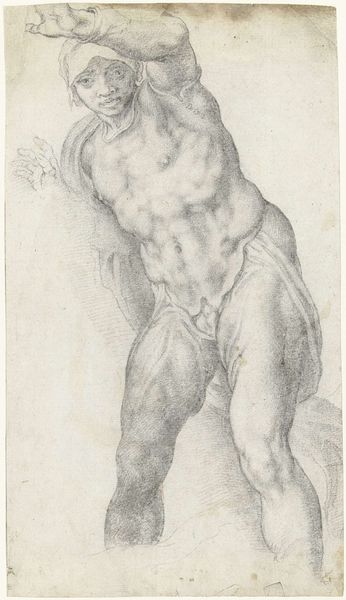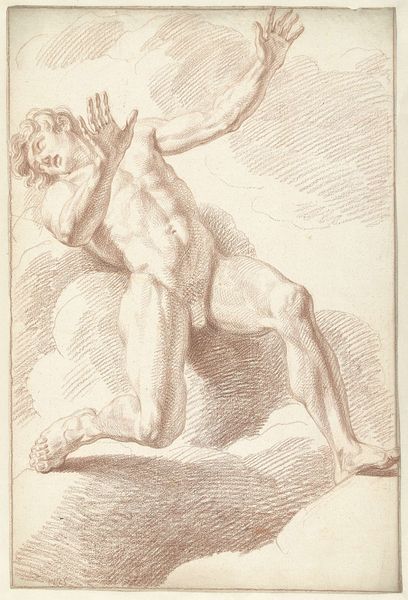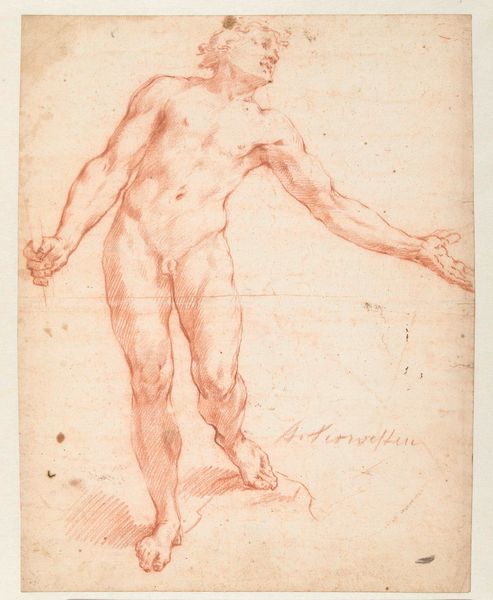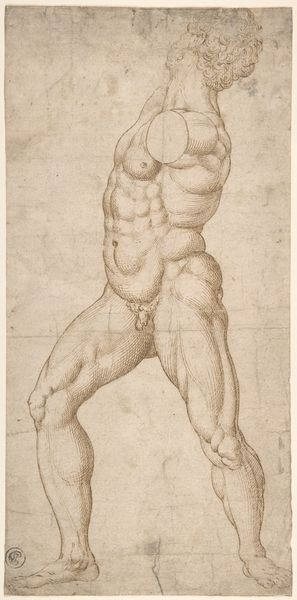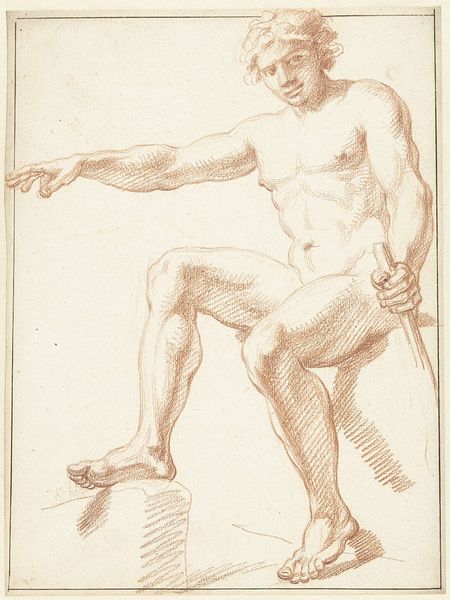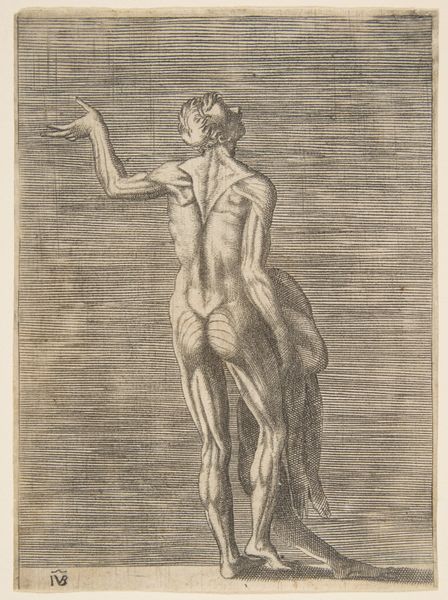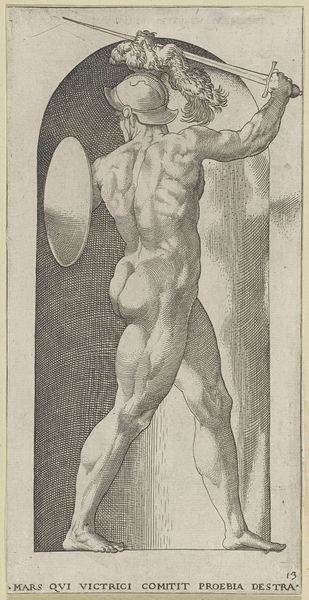
Studie van een zittend mannelijk naakt, wijzend met de rechterarm 1703 - 1775
0:00
0:00
louisfabritiusdubourg
Rijksmuseum
drawing, pencil
#
drawing
#
baroque
#
charcoal drawing
#
form
#
pencil drawing
#
pencil
#
line
#
academic-art
#
nude
Dimensions: height 317 mm, width 255 mm
Copyright: Rijks Museum: Open Domain
Curator: The piece before us is "Studie van een zittend mannelijk naakt, wijzend met de rechterarm"— "Study of a seated male nude, pointing with the right arm." Attributed to Louis Fabritius Dubourg, it dates roughly from 1703 to 1775. Editor: It’s the ochre tones that strike me first. That raw umber or maybe even a soft red chalk… whatever it is, the artist has clearly favored form over substance, leaving the overall impression quite minimal, academic even. Curator: The minimal palette certainly keeps our focus locked on the form. Observe the emphasis on the idealized musculature—a common Baroque trope intended to convey power and perhaps even a sort of divine will, indicated by that forceful gesture. Editor: Indeed, and that labor to capture that ideal should not be ignored. Think of the preparation of materials. Consider the choice of paper—its texture influencing the flow of pencil or charcoal. Was it handmade? What was the cultural status and commercial value of artistic paper at the time of production? Curator: The act of drawing itself held a particular symbolic value during the Baroque period. It signified knowledge, control over the physical world. Notice the precise, almost scientific rendering of the human form. Editor: And while the skill on display is impressive, the figure is rooted to this world of ink and line, made to be studied and consumed as art. Consider its connection to similar poses from classical antiquity—its very nude nature! Was the labor to pose part of a student's education or even pleasure for both sitter and maker? These connections reveal layers of artifice… Curator: Absolutely. This pose speaks of power, leadership and perhaps something further. The subject could be a representation of Mars or another Greco-Roman deity in modern clothes, a figure meant to both awe and guide. Editor: Guide? Or dictate? The pose strikes me more authoritarian. However, our subject matter returns to the earthly through those material choices—back to the hand, the mind and pencil on that paper. Curator: So much more than merely an academic exercise, the artist imbued line and shade, perhaps unconsciously, with complex cultural messages about the body and about seeing. Editor: Seeing and making: two inseparable acts, grounded by tangible materiality and lived social experience, the final gesture from that pointing figure now pointing back, directly, to us.
Comments
No comments
Be the first to comment and join the conversation on the ultimate creative platform.

